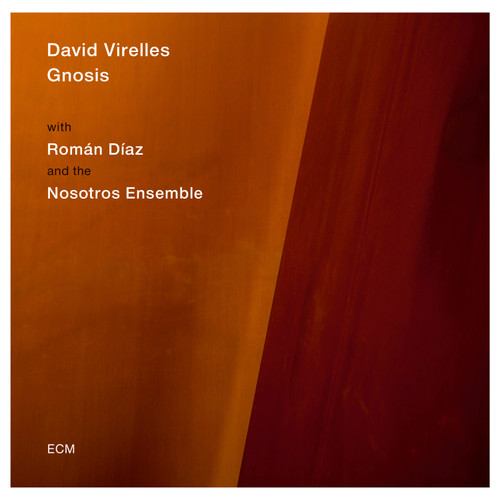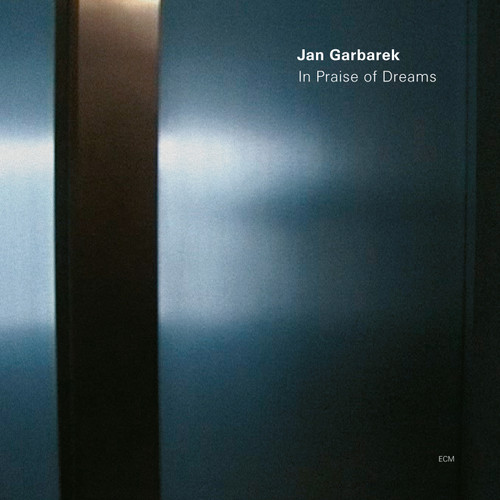For his third ECM release as a leader, Chris Potter presents a new acoustic quartet that naturally blends melodic rhapsody with rhythmic muscle. The group includes superlative musicians well known to followers of ECM’s many recordings from New York over the past decade: keyboardist David Virelles, bassist Joe Martin and drummer Marcus Gilmore, who each shine in addition to the leader on multiple horns. The Dreamer Is the Dream features Potter on tenor saxophone – the instrument that has made him one of the most admired players of his generation – in the striking opener “Heart in Hand” and such album highlights as “Yasodhara,” as well as on soprano sax (“Memory and Desire”) and bass clarinet (the title track). Potter is an artist who “employs his considerable technique in service of music rather than spectacle,” says The New Yorker, and his composing develops in texture and atmosphere with every album. Along with his previous ECM releases, Imaginary Cities and The Sirens, he has appeared on some of the label’s most acclaimed discs, including Paul Motian’s classic Lost in a Dream and Dave Holland’s Grammy Award-winning What Goes Around.
FEATURED ARTISTS
TRACKLIST
A1 Heart In Hand 8:19
A2 Memory And Desire 7:52
A3 The Dreamer Is The Dream 8:18
B1 Yasodhara 10:07
B2 Ilimba 9:52
B3 Sonic Anomaly 5:34
BACKGROUND
For his third ECM release as a leader, Chris Potter presents a new acoustic quartet that naturally blends melodic rhapsody with rhythmic muscle. The group includes superlative musicians well known to followers of ECM’s many recordings from New York over the past decade: keyboardist David Virelles, bassist Joe Martin and drummer Marcus Gilmore, who each shine in addition to the leader on multiple horns. The Dreamer Is the Dream features Potter on tenor saxophone – the instrument that has made him one of the most admired players of his generation – in the striking opener “Heart in Hand” and such album highlights as “Yasodhara,” as well as on soprano sax (“Memory and Desire”) and bass clarinet (the title track). Potter is an artist who “employs his considerable technique in service of music rather than spectacle,” says The New Yorker, and his composing develops in texture and atmosphere with every album.
Potter and company recorded The Dreamer Is the Dream at New York City’s Avatar Studios, following several days of preproduction run-throughs in Switzerland and a long string of live performances before that. By the time they convened at Avatar, the music flowed out abundantly, with producer Manfred Eicher helping to shape the end result to dramatic effect. Potter says, “As a player, you can get lost in the thicket of things. But Manfred sees the forest, not just the trees. He has a real feel for the big picture – mood, density, an album as storytelling. I’ve made a lot of records with him now, and I appreciate more and more the synergistic give and take with him.”
As for the quartet, its “cross-generational mix of personalities feels special,” Potter says. “Joe Martin I’ve known the longest – we used to play all the same New York clubs back in the ’90s. Along with the fact that he always plays perfectly in tune, he has this focused, deliberate approach to the bass, very clear and supportive – he’s the foundation of the band. This quartet has a big dynamic range, but also more control, allowing me to play in a thoughtful way. Joe is a big part of that.
“Now Marcus, he’s a very individual drummer,” Potter adds. “He doesn’t have a splashy, flashy sound, but one that’s subtle, detailed, very musical. He has his own way of playing and seems to evolve every six months. On piano, David is coming from a unique place, having grown up in Cuba but never playing in any stereotypical Latin way. His musical center is much further to the left than some of his forebears. He has made a serious study of Cuban folkloric rhythms but also of avant-garde jazz. He plays with Henry Threadgill, and then I’ll see him working on a Ligeti etude. The rhythmic sophistication of David’s playing is just extraordinary. And the way David and Marcus interact rhythmically has this particular generational character – it’s their own thing. It’s hard to put your finger on it, but Joe and I share it in our own way. Our generation – with people like Brad Mehldau, Joshua Redman, Kurt Rosenwinkel – has its own sensibility, its own center of rhythmic gravity. Marcus and David’s generation is building on what we did just as we did on the generation before us. That’s challenging – and inspiring.”
Potter describes his compositional method as often being “like a dream state.” “Heart in Hand,” “Memory and Desire” and the album’s title track each came from such free-associative writing sessions. The title track includes some of Potter’s most expressive playing on bass clarinet, while “Memory and Desire” is notable for its opening atmosphere set by samples as well as the multiple woodwind overdubs, Potter having imagined it scored all of a piece. He explored inspirations further afield with “Yasodhara,” named for the wife Buddha left behind; this track reveals its Indian influence in a 10-minute cycling of tempos, along with being marked by an especially dramatic extended improvisation by Virelles. “Ilimba” evokes Africa, with Potter designing the piece around a pattern he wrote on the titular thumb piano; the piece also includes an exciting drum solo from Gilmore. “Sonic Anomaly” is the album’s “light-hearted kicker,” in Potter’s words.
The creative process for each of Potter’s ECM albums has varied widely, part of an ideal of evolution. “One of the challenges in jazz is that we have to ask ourselves how comfortable we are working in a different way from the time before – and pushing past that,” he says. “I try to keep in mind that the primary value of jazz is its aesthetic of surprise, not only for the audience but for the artist. It’s the art of making it up as you go along, taking advantage of happy accidents and finding the story to unfold on the way. That’s when the magic happens.”
Since bursting onto the New York scene in 1989 as an 18-year-old prodigy with bebop icon Red Rodney, Potter has steered a steady course of growth as an instrumentalist and composer-arranger. A potent improviser and the youngest musician ever to win Denmark's Jazzpar Prize, Potter has forged an impressive discography that includes 17 albums as a leader and sideman appearances on 100 more. He has performed or recorded with Pat Metheny, Herbie Hancock, Jim Hall, Paul Motian, Ray Brown, John Scofield and Dave Douglas, as well as with the Mingus Big Band. Potter made his ECM debut on Dave Holland’s 2000 album Prime Directive, following that with appearances on the bassist’s Not for Nothin’, Extended Play: Live at Birdland and What Goes Around. Along with featuring on Steve Swallow’s Always Pack Your Uniform on Top and Damaged in Transit, Potter collaborated with Paul Motian and Jason Moran on the 2010 ECM live album Lost in a Dream.
Potter’s ECM leader debut of 2013, The Sirens, saw him at the head of a quartet with bassist Larry Grenadier, drummer Eric Harland and both Craig Taborn and David Virelles on keyboards. BBC Online praised the album as proof that “the union of Potter and ECM promises to be happy and fruitful.” The saxophonist’s second ECM release, 2015’s classically tinged Imaginary Cities, featured his Underground Orchestra, a group that built on the core of his previous Underground Quartet with Taborn, guitarist Adam Rogers and drummer Nate Smith to also include two bassists, a string quartet and Potter’s old band mate from the Dave Holland Quintet, vibraphonist Steve Nelson. All About Jazz called the album “a masterpiece.”
4 Reviews Hide Reviews Show Reviews
-
TURN OF CHRIS POTTER MORE INTIMATE, BUT JAZISTIC.
Potter is a great saxophonist, one of the best, who has also tried, successfully, to make not only pure jazz but also more intricate musics, now in this new album ECM returns to simplicity, from his magnificent start ballad " Heart in Handa "to the end" Sonic Anomaly "makes a complete statement of what the Quwe is for today. A multitude of facets of the same truth. If in previous recordings we have witnessed an evident expasion here we are witnessing an instrospection more than evident, less bombastic but more intimate and true. Music to immerse yourself in it totally. Great record with great musicians David Virelles on piano, Joe Martin, on bass and Marcus Gilmore on percussion. The return to the format of quartet makes all this process more truthful, but evident
-
Excellent
Chris Potter is always surprising. What a sound on bass clarinet ! He's UNIQUE
-
Fantastic from start to finish
Fantastic from start to finish. A traditional quartet format (sax, piano, bass and drums) which Chris and company take to a whole new level. Chris Potter never seems to repeat himself from recording to recording. How does he do it?
-
Potter , maintains the TRADITION
Chris Potter, is a player that will " Write " a new Era as Leader / Saxophonist. A Truely talented player , maintaining the great traditions of , Coltrane / Shorter/ Parker. Supporting players suitably EXCELLENT. LOVE IT.








